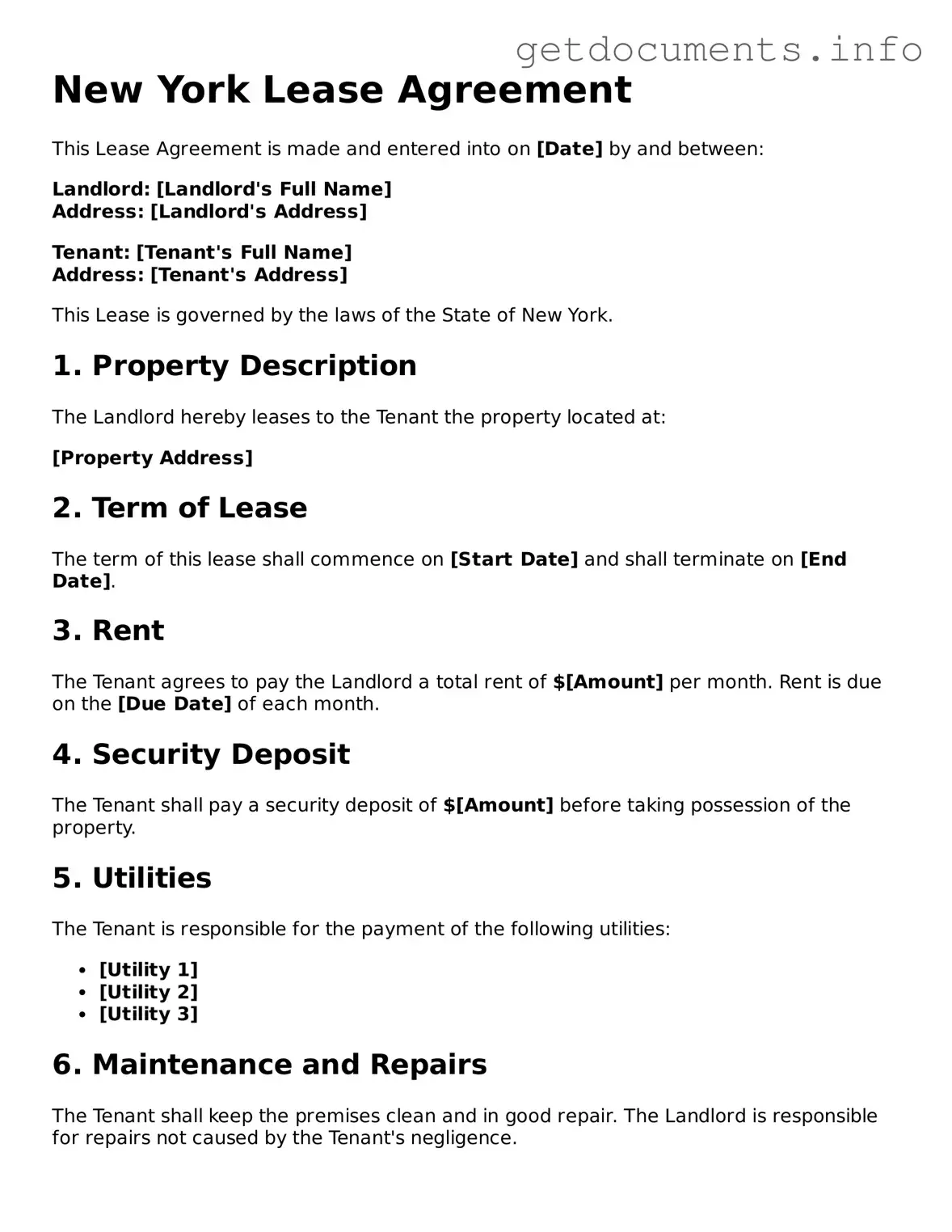The New York Lease Agreement form is a crucial document for both landlords and tenants, outlining the terms and conditions of renting a residential or commercial property in the state. This form typically includes essential details such as the names of the parties involved, the rental property's address, and the duration of the lease. It also specifies the monthly rent amount, security deposit requirements, and payment methods. Additionally, the agreement addresses maintenance responsibilities, rules regarding pets, and procedures for terminating the lease. Understanding these key components is vital for ensuring a smooth rental experience, protecting the rights of both parties, and minimizing potential disputes. By adhering to the guidelines set forth in this agreement, landlords and tenants can establish a clear and mutual understanding of their obligations and expectations throughout the lease term.
